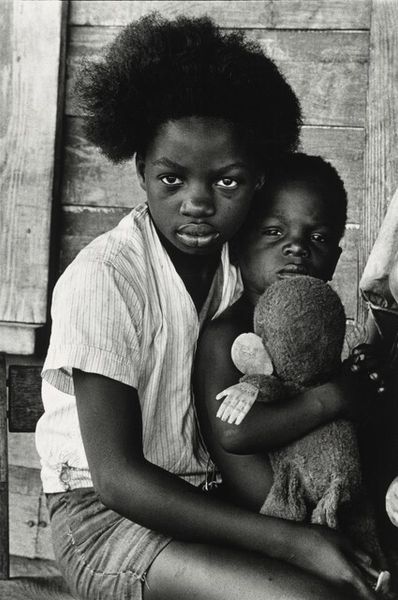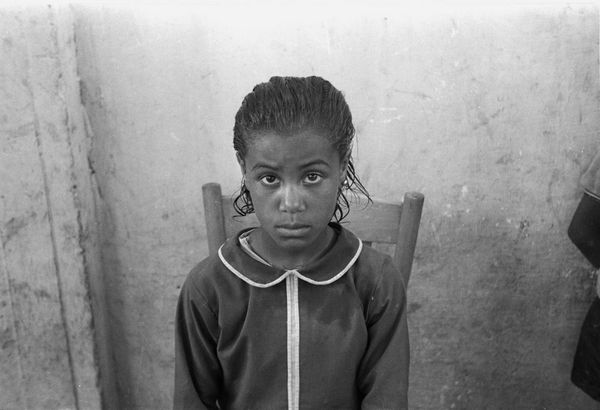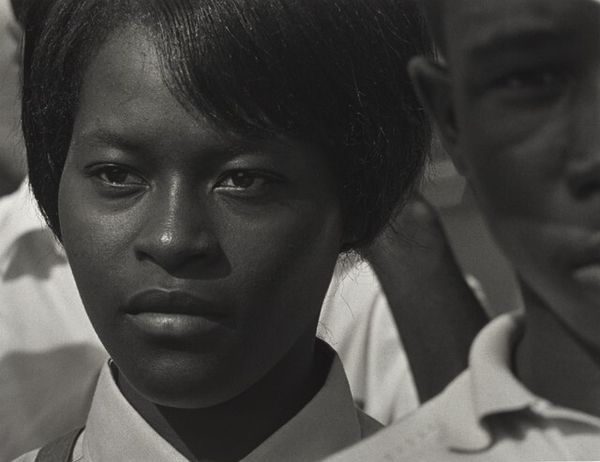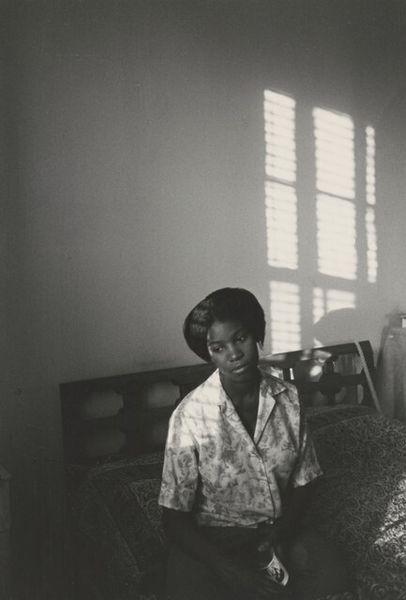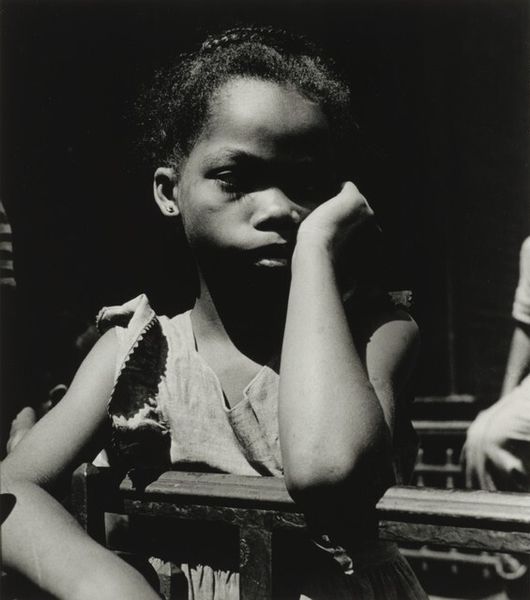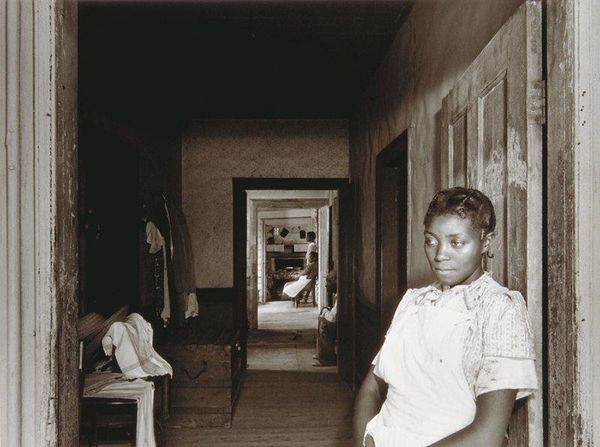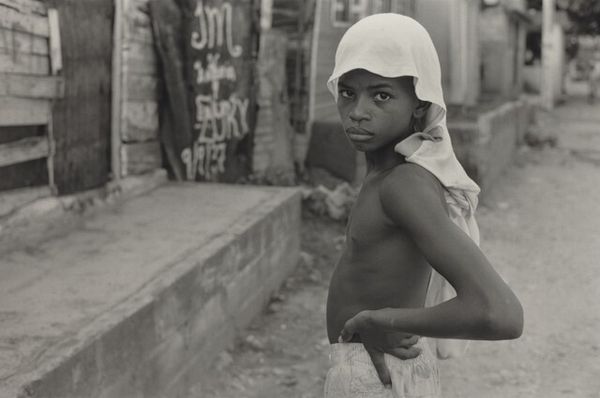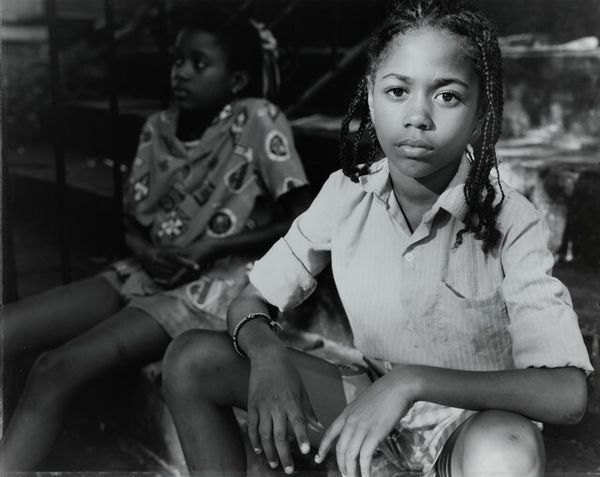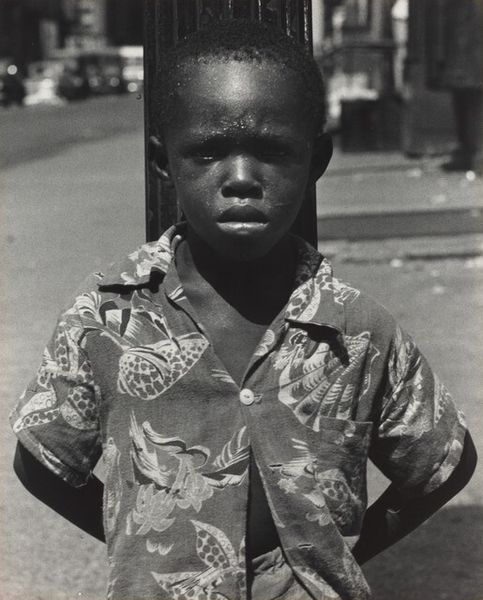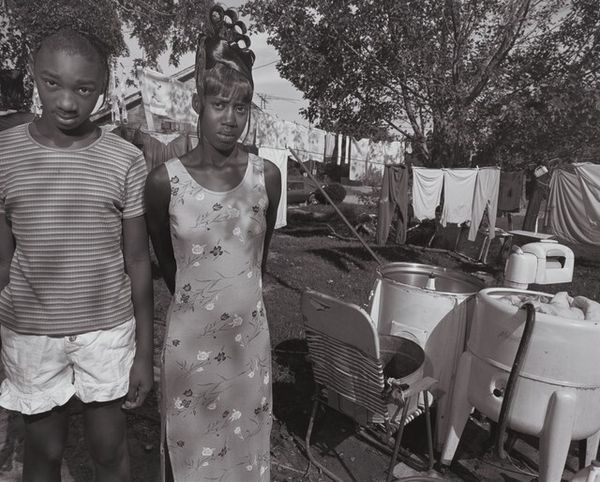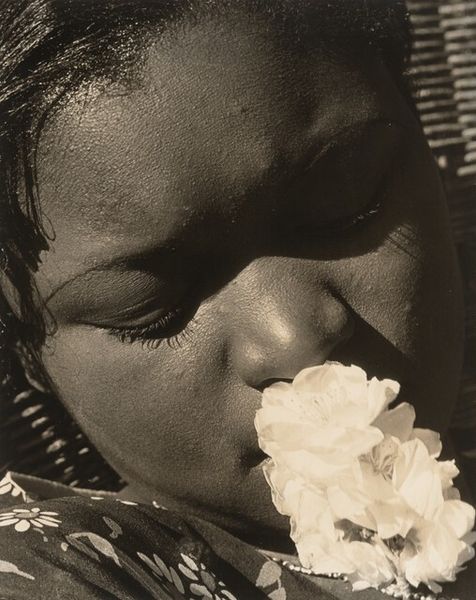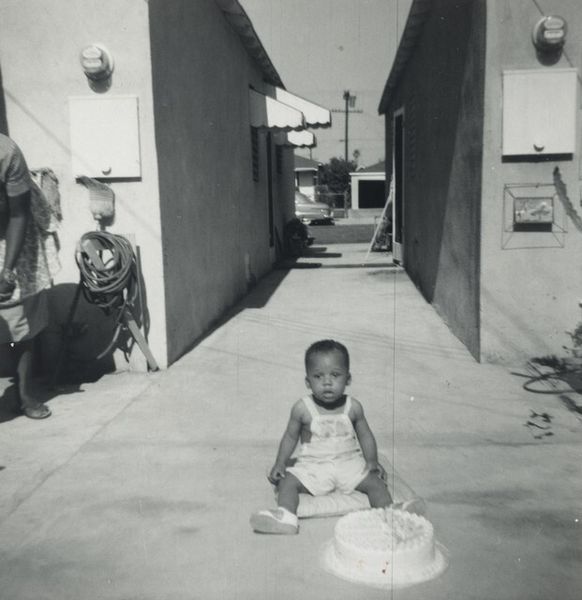
photography, gelatin-silver-print
#
african-art
#
black and white photography
#
social-realism
#
photography
#
black and white
#
gelatin-silver-print
#
monochrome photography
#
monochrome
#
monochrome
Dimensions: image: 17.9 x 13.4 cm (7 1/16 x 5 1/4 in.) sheet: 25.2 x 20.2 cm (9 15/16 x 7 15/16 in.)
Copyright: National Gallery of Art: CC0 1.0
Curator: This compelling photograph is from Milton Rogovin’s “Storefront Churches” series, taken between 1958 and 1961. Rogovin used gelatin-silver prints for this project. What do you make of it? Editor: It’s stark, immediately drawing attention to the palpable textures of the chipped plaster and the solemn expression of the young girl. The contrast between her smooth skin and the weathered wall is striking. Curator: Rogovin aimed to document the lives of the working class, particularly those marginalized and often overlooked. The series focuses on the spiritual centers within Black communities of Buffalo, New York. Editor: Seeing the church building as just another material good or consumption is something, when the image and construction are supposed to stand in contrast of that—to transcend. Does Rogovin present those material realities with a touch of ironic awareness? Curator: Perhaps. Storefront churches were often established in repurposed commercial spaces. Rogovin was interested in these spaces, their architecture, and how communities adapted them to their own spiritual needs. Editor: Note how the church interior, with its modest design, acts as a canvas for faith. It almost suggests that sacred space isn't defined by elaborate architecture but by the community's intention. The image’s historicity makes the church setting feel alive with worship and song despite its stillness. Curator: Precisely. The image also raises questions about representation. How are Black communities represented, and who gets to control that representation? Editor: Absolutely, the layered meaning derived from the photograph brings forth several questions on labor and representation. As such, viewing Rogovin’s photograph, for me, offers a perspective that moves between structure, spirituality, and material existence. Curator: It's interesting how his project has managed to capture not just physical space but also offers commentary on the community building—all captured through the lens of social context. Editor: A worthwhile and insightful reflection!
Comments
No comments
Be the first to comment and join the conversation on the ultimate creative platform.
